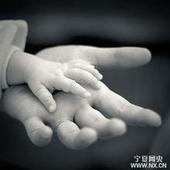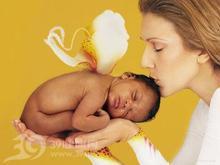Children with Cerebral Palsy: A Parent's Guide(作者 Elaine Geralis ) 选段5
2 posters
 Children with Cerebral Palsy: A Parent's Guide(作者 Elaine Geralis ) 选段5
Children with Cerebral Palsy: A Parent's Guide(作者 Elaine Geralis ) 选段5
Chapter 1: What Is Cerebral Palsy? (2)
As mentioned previously, cerebral palsy is a broad term which encompasses many different disorders of movement and posture. To describe particular types of movement disorders covered by the term, pediatricians, neurologists, and therapists use several classification systems and many labels. To understand these labels and classification systems, you must first understand what professionals mean by one key term: muscle tone.
Muscle tone refers to the amount of tension or resistance to movement in a muscle. Muscle tone is what enables us to keep our bodies in a certain position or posture---for example, to sit with our backs straight and our heads up. Muscle tone, or more precisely, changes in muscle tone, is also what enables us to move. For example, to bend your arm to bring your hand up to your face, you must shorten (increase the tone of) the biceps muscles on the front of your arm at the same time you are lengthening (reducing the tone of) the triceps muscles on the back of your arm. To complete a movement smoothly, the tone in all muscle groups involved must be balanced---the brain must send messages to each muscle group to actively change its resistance.
All children with cerebral palsy have damage to the area of the brain that control muscle tone. As a result, they may have increased muscle tone, reduced muscle tone, or a combination of the two (variable or fluctuating tone). Which parts of their bodies are affected by the abnormal muscle tone depends upon where the brain damage occurs.

Reference:The book “Children with Cerebral Palsy: A Parent's Guide”
译:
第一章:什么是脑瘫?(2)
正如之前所提到的,脑瘫是一个广泛的概念,包含了行动与姿态上的许多异常。为了描述这个概念所包括的某种运动障碍,儿科医师,神经科学家,以及康复治疗师运用了一些分类系统和许多标签。要了解这些标签和分类系统,你首先要弄明白专业人士所提到的一个核心概念:肌肉张力。
肌肉张力是指肌肉运动时拉力和阻力的量。肌肉张力使我们能够将身体保持在某种位置或者姿势---比如,在坐着的时候挺直后背与抬高头脑。肌肉张力,或者更准确来说,肌肉张力的变化,也是让我们能够运动的重要因素。例如,若要弯曲你的胳膊去使你的手触碰到脸部,你必须缩短(及增加张力)你前臂的二头肌,同时你还要拉长(及减少张力)你手臂背面的三头肌。为了平顺地完成一个动作,所有相关的肌肉群组的张力必须保持平衡---脑部要给每一个肌肉群组发送信息去积极地改变它的阻力。
所有患有脑瘫的孩子都在脑部控制肌肉张力的区域患有损伤。因此,他们可能有过高的肌肉张力,过低的肌肉张力,或是二者的综合(多变的或波动的张力)。他们身体的哪一部分受异常肌肉张力的影响则取决于脑部损伤的具体位置。

出处:书籍《Children with Cerebral Palsy: A Parent's Guide》.
As mentioned previously, cerebral palsy is a broad term which encompasses many different disorders of movement and posture. To describe particular types of movement disorders covered by the term, pediatricians, neurologists, and therapists use several classification systems and many labels. To understand these labels and classification systems, you must first understand what professionals mean by one key term: muscle tone.
Muscle tone refers to the amount of tension or resistance to movement in a muscle. Muscle tone is what enables us to keep our bodies in a certain position or posture---for example, to sit with our backs straight and our heads up. Muscle tone, or more precisely, changes in muscle tone, is also what enables us to move. For example, to bend your arm to bring your hand up to your face, you must shorten (increase the tone of) the biceps muscles on the front of your arm at the same time you are lengthening (reducing the tone of) the triceps muscles on the back of your arm. To complete a movement smoothly, the tone in all muscle groups involved must be balanced---the brain must send messages to each muscle group to actively change its resistance.
All children with cerebral palsy have damage to the area of the brain that control muscle tone. As a result, they may have increased muscle tone, reduced muscle tone, or a combination of the two (variable or fluctuating tone). Which parts of their bodies are affected by the abnormal muscle tone depends upon where the brain damage occurs.

Reference:The book “Children with Cerebral Palsy: A Parent's Guide”
译:
第一章:什么是脑瘫?(2)
正如之前所提到的,脑瘫是一个广泛的概念,包含了行动与姿态上的许多异常。为了描述这个概念所包括的某种运动障碍,儿科医师,神经科学家,以及康复治疗师运用了一些分类系统和许多标签。要了解这些标签和分类系统,你首先要弄明白专业人士所提到的一个核心概念:肌肉张力。
肌肉张力是指肌肉运动时拉力和阻力的量。肌肉张力使我们能够将身体保持在某种位置或者姿势---比如,在坐着的时候挺直后背与抬高头脑。肌肉张力,或者更准确来说,肌肉张力的变化,也是让我们能够运动的重要因素。例如,若要弯曲你的胳膊去使你的手触碰到脸部,你必须缩短(及增加张力)你前臂的二头肌,同时你还要拉长(及减少张力)你手臂背面的三头肌。为了平顺地完成一个动作,所有相关的肌肉群组的张力必须保持平衡---脑部要给每一个肌肉群组发送信息去积极地改变它的阻力。
所有患有脑瘫的孩子都在脑部控制肌肉张力的区域患有损伤。因此,他们可能有过高的肌肉张力,过低的肌肉张力,或是二者的综合(多变的或波动的张力)。他们身体的哪一部分受异常肌肉张力的影响则取决于脑部损伤的具体位置。

出处:书籍《Children with Cerebral Palsy: A Parent's Guide》.
由Admin于周二 十月 16, 2012 12:51 am进行了最后一次编辑,总共编辑了1次
 关于肌肉张力
关于肌肉张力
我的理解就是:肌肉的力量和弹性。这样是不是直接点?因为我的孩子是脑部被病毒感染后引起剧烈呕吐,从而导致了严重的营养不良,肌肉全部都消失了。后来慢慢长起来,力量和机能就都缺失了。
王ISA- 帖子数 : 9
注册日期 : 12-08-20
 关于肌肉张力
关于肌肉张力
并不全对哦~肌肉张力和肌肉的力量无关,肌肉力量的强弱只是决定承重能力而已,比方说肌肉力量强的人可以单手举50斤,而弱的人举起一本重一点的书可能都觉得费劲。脑瘫孩子之所以看起来完全不能正常运用肌肉是因为脑部无法控制肌肉的拉伸,并非没有肌肉力量(很多脑瘫孩子其实相当有力呢)。肌张力就像是控制一根皮筋的能力一样,拉力欠缺的皮筋无法拉到足够的长度,而阻力欠缺的皮筋则轻轻一使劲就拉得过长了。脑部感染的话是损伤了大脑的控制力,而并非肌肉本身的机能哦~【参照Children with Cerebral Palsy: A Parent's Guide(作者 Elaine Geralis ) 选段4】王ISA 写道:我的理解就是:肌肉的力量和弹性。这样是不是直接点?因为我的孩子是脑部被病毒感染后引起剧烈呕吐,从而导致了严重的营养不良,肌肉全部都消失了。后来慢慢长起来,力量和机能就都缺失了。
您在这个论坛的权限:
您不能在这个论坛回复主题